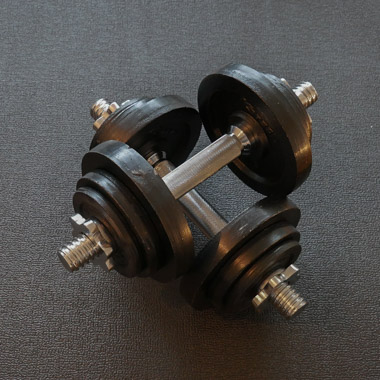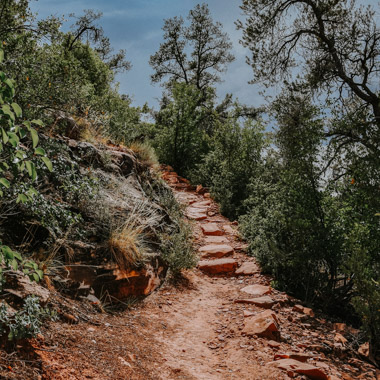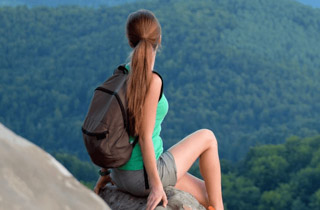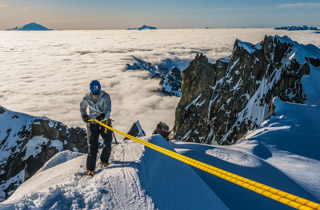Total Health Overview
Total Health integrates seven overlapping areas of wellness. In our initial Zoom consultation, we help clients determine which ones they wish to focus on first, and by improving them, often the other areas improve as well. These areas include Movement, Sleep, Nutrition, Living Environment, Social Connections, Life Purpose, and Joyful Rejuvenation.
To develop upper body strength, lower body strength and balance, and mobility for scrambling and mountain climbing, explore a few of our favorite movements in the following articles.
To give you the edge over more generalized fitness programs, include sport-specific skills and tips you’ll need to succeed with some of the following articles.
Preparation for scrambling and alpine climbing involves training for specific fitness qualities, going on sport-specific outings, and practicing skills necessary for the sport.
The five major fitness components to include in a program for scrambling and mountain climbing include:
- Aerobic Endurance
- Anaerobic Endurance (for high altitude)
- Upper Body Strength
- Lower Body and Core Strength and Balance
- Flexibility and Mobility
Explore scrambling and alpine climbing program design and nutrition requirements in these suggested articles.
To prepare for your favorite alpine adventures, explore how to increase your aerobic and anaerobic capacity with these suggested articles.
Individuals interested in reaching the tops of mountains might get involved in scrambling and technical mountain climbing. Such activities often take you off established hiking trails and onto more technical terrain including talus, scree, rock, snow, ice, and glaciers. You might encounter stream crossings, dense brush, and snowy slope traverses. Such activities might involve ropes and ice axes. Scrambling and alpine climbing also typically require more upper-body strength and endurance than hiking and backpacking.
To improve your balance and enhance your lower body strength and endurance, as well as mobility, for hiking, explore a few of our favorite movements in the following articles.
To give you the edge over more generalized fitness programs, include hiking-specific tips that will help you to succeed with some of the following articles.
Preparation for hiking involves training for specific fitness qualities, going on sport-specific outings, and practicing skills necessary for the sport.
The four major fitness components to include in a program for hiking include:
- Aerobic Endurance
- Anaerobic Endurance (for high altitude)
- Lower Body and Core Strength and Balance
- Flexibility and Mobility
Explore hiking program design and nutrition requirements in these suggested articles.
To prepare for your favorite hiking adventures, discover how to increase your aerobic and anaerobic capacity with these suggested articles.
Hikers cover non-technical terrain of varying distances and elevation gain while carrying a pack. Weight for day hikes might range from a few pounds (i.e. snack, water, jacket) up to 20 pounds. Equipment might include trekking poles, headlamps, stove and fuel for multi-hour days, snacks, and clothing. Distances range from a few miles to extreme cases like the Grand Canyon Rim-to-Rim-to-Rim (43 miles and 12,000′ gain/loss). Elevation gain might range from flat to 7000′ or more. Whatever your hiking goal, we can create a suitable, custom-tailored training program!
To develop upper body strength, lower body strength and balance, and mobility for trekking and backpacking, explore a few of our favorite movements in the following articles.
To give you the edge over more generalized fitness programs, include trekking and backpack-specific tips that will help you to succeed with some of the following articles.
Preparation for trekking and backpacking involves training for specific fitness qualities, going on sport-specific outings, and practicing skills necessary for the sport.
The four major fitness components to include in a program for trekking and backpacking include:
- Aerobic Endurance
- Anaerobic Endurance (for high altitude)
- Lower Body and Core Strength and Balance
- Flexibility and Mobility
Explore trekking and backpacking program design and nutrition requirements in these suggested articles.
To prepare for your trekking or backpacking adventures, learn more about how to develop your aerobic and anaerobic capacity with a few suggested articles.
Backpacking involves overnight camping in which the athlete carries everything needed for the duration of a trip, rather than having assistance from pack animals. Backpacking can range from an overnight trip near civilization to weeks in remote backcountry. Some people plan months-long trips with re-supplies such as segment- or thru-hikes along the Pacific Crest Trail, Continental Divide, or the Appalachian Trail.
Trekking includes carrying a day pack and staying in huts, teahouses, or yurts, often at altitude. Class treks include Machu Picchu, Everest Base Camp, or the Snowman’s trek in Bhutan. It also includes the Camino de Santiago. Wherever your trip takes you, we’ve got you covered with appropriate training suggestions.










